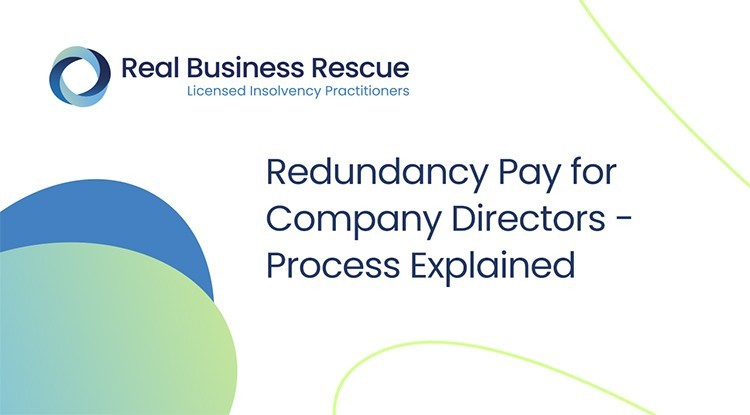What Happens to Redundancy If Company Goes Bust? An Overview to Your Rights
What Happens to Redundancy If Company Goes Bust? An Overview to Your Rights
Blog Article
Discovering the Operational Characteristics of Firm Redundancy and Its Long-Term Sustainability

Redundancy Approaches for Service Connection
In order to guarantee nonstop operations, services have to execute efficient redundancy strategies for company connection. Redundancy in this context describes the replication of crucial elements or features within a system to mitigate the impact of prospective failings. By including redundancy strategies, organizations can improve their strength versus disruptions triggered by different aspects such as all-natural calamities, equipment failures, or cyber-attacks.
One usual redundancy strategy is the implementation of back-up systems and information storage solutions. This includes producing duplicates of crucial information and systems that can be turned on in case of a primary system failure. Additionally, organizations can establish repetitive interaction networks and power resources to keep connection and procedures during unpredicted occasions.
In addition, cross-training staff members to do numerous functions within the company can function as an important redundancy technique. This guarantees that important tasks can still be executed also if vital employees are inaccessible because of disease or other factors. Generally, effective redundancy techniques are essential for businesses to promote operational continuity and decrease the effect of potential disturbances.
Effect of Redundancy on Organizational Strength
Given the important duty redundancy techniques play in making certain business continuity, checking out the influence of redundancy on organizational resilience ends up being essential for comprehending the all natural functional dynamics of a company. Redundancy, when tactically carried out, can dramatically contribute to enhancing an organization's resilience in the face of unforeseen difficulties.
Additionally, redundancy can cultivate advancement and imagination within an organization as employees really feel equipped to take calculated threats, knowing that there is a safety web to support them in case of failing. Generally, the impact of redundancy on business durability is profound, forming the long-term sustainability and success of a company.
Stabilizing Efficiency and Adaptability in Redundancy
Accomplishing a harmonious stability in between operational performance and flexible adaptability is a critical obstacle in the calculated release of redundancy within organizations. As well much adaptability without a strong functional foundation can result in ineffectiveness and incongruity.
To balance performance and versatility in redundancy preparation, organizations have to thoroughly assess their functional needs, market dynamics, and calculated objectives. Executing lean techniques can boost effectiveness by removing and simplifying processes waste, while cultivating a society of flexibility and constant renovation can improve versatility. Additionally, purchasing cross-training programs and durable communication channels can help grow a functional workforce qualified of dealing with diverse tasks during durations of transition. Ultimately, discovering the ideal balance between efficiency and flexibility is critical for building a durable and lasting organization despite unpredictability.
Long-Term Sustainability With Redundancy Planning
To ensure long-lasting stability and stability, organizations have to strategically straighten their redundancy preparation with long-term sustainability goals, thus harmonizing operational performance with flexible flexibility. Companies should check out redundancy not as a reactive solution to immediate troubles yet as an aggressive method for lasting success.

Proactive Procedures for Lasting Business Workflow
Just how can companies proactively improve visit the site their operational sustainability for long-lasting success? Carrying out aggressive actions is necessary for companies intending to guarantee sustainable procedures. One crucial strategy is to buy technology and development to enhance processes, minimize waste, and remain affordable on the market. Adopting sustainable practices such as decreasing energy intake, decreasing carbon footprint, and enhancing redundancy if company goes bust source use can not only profit the atmosphere however also result in set you back financial savings over time.
Moreover, promoting a society of constant enhancement and discovering within the organization can enhance flexibility to transforming market conditions and customer needs. Urging staff member involvement in decision-making processes and providing possibilities for expert advancement can boost spirits, efficiency, and overall efficiency. Establishing clear goals, monitoring vital efficiency indicators, and routinely evaluating progression are important components of aggressive sustainability administration.
Teaming up with vendors, customers, and various other stakeholders to promote sustainable techniques throughout the supply chain can produce a causal sequence of favorable influence - redundancy pay if company goes bust. By her response taking positive actions towards functional sustainability, companies can construct resilience, drive innovation, and protect their long-term success in an ever-evolving service landscape
Conclusion

In the realm of business administration, the strategic release of business redundancy stands as a crucial yet complex practice that demands a delicate equilibrium between functional effectiveness and long-term feasibility. By dissecting the functional dynamics that underpin business redundancy and evaluating its wider implications for business durability and flexibility, a nuanced understanding of exactly how redundancy approaches can shape the future trajectory of a firm begins to unfold.Offered the crucial role redundancy approaches play in guaranteeing organization continuity, checking out the influence of redundancy on organizational durability comes to be important for recognizing the holistic operational characteristics of a firm. Overall, the effect of redundancy on business strength is extensive, shaping the long-lasting sustainability and success of a business.
In verdict, understanding the operational dynamics of business redundancy is vital for ensuring long-term sustainability.
Report this page